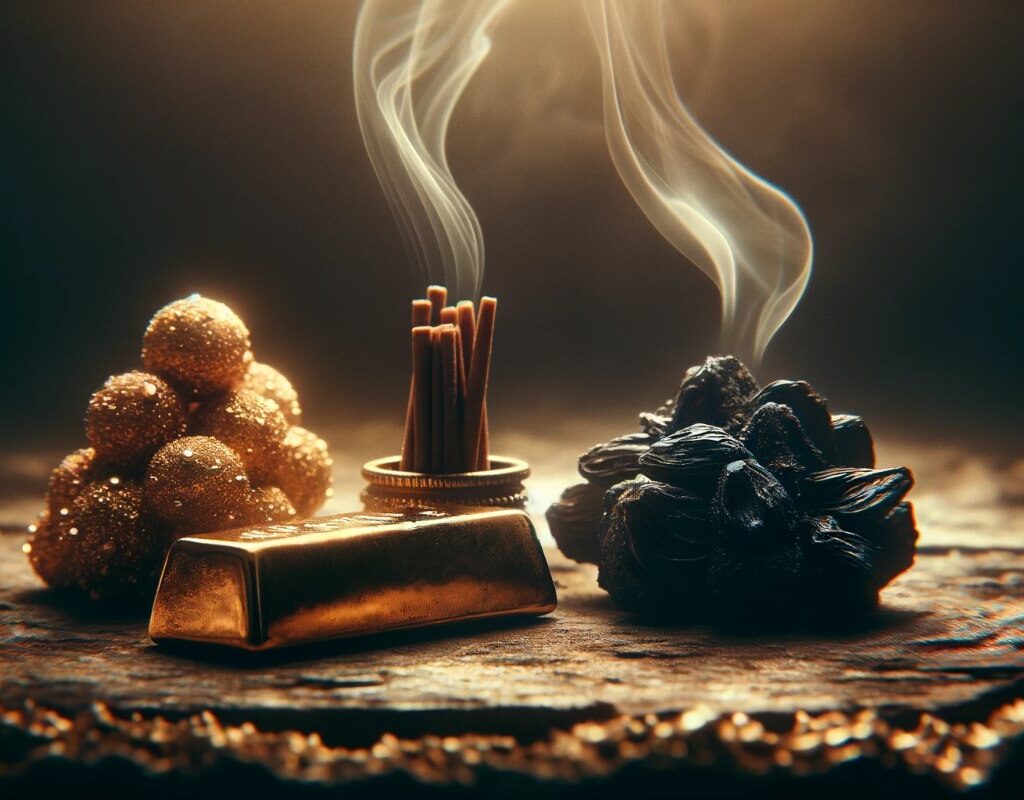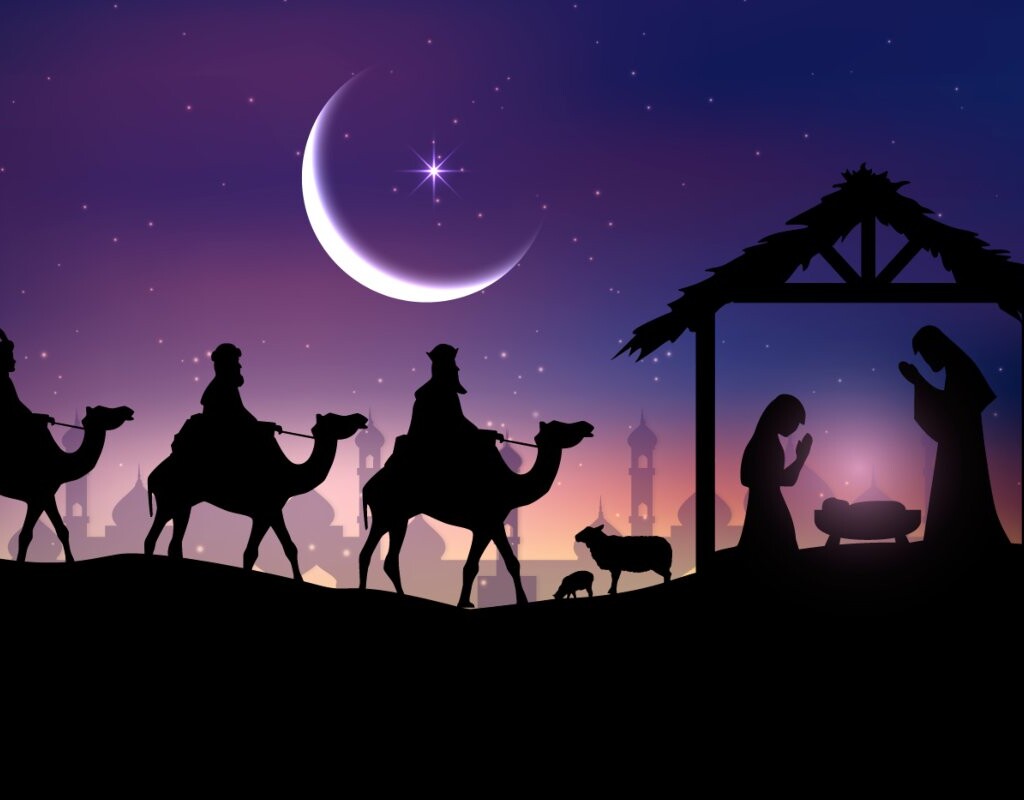These gifts, transcending their material value, embody a profound religious and cultural significance. This article delves into the symbolism of gold, frankincense, and myrrh, presented by the Magi from the East, from a historical and symbolic perspective.
Gold: The Regal Gift for the King of the Jews
Symbolism and Historical Context of Gold
Gold, revered for its value and durability, has long been a symbol of royalty and power.
In the context of the Magi’s visit, gold takes on a special meaning. According to the Gospel of Matthew, the Magi sought the “King of the Jews,” implying that gold was offered as a recognition of Jesus’ royal status.
Presenting gold to Jesus acknowledges his authority and divine stature, a pivotal aspect of the Christian narrative.
In biblical times, gold was not just a precious metal but an essential element in various cultures and religions. It was used in ceremonies, as offerings to gods, and in constructing sacred places. Therefore, offering gold to Jesus symbolizes his royalty and the sacred’s importance in his earthly mission.
Frankincense: Divine Connection
Frankincense in Religious Traditions
Frankincense, known for its penetrating aroma and use in religious rituals, represents the divinity of Christ.
In various cultures and religions, including Jewish and pagan, frankincense was burned as an act of reverence and sacrifice to the gods. This practice continues today in many religious traditions, including the Catholic and Orthodox churches.
The term “frankincense” encompasses various aromatic substances. In biblical times, there were different types of frankincense, each with its meaning and use. According to interpretations of ancient texts, the frankincense offered to Jesus might have been a special blend of resins, underscoring the uniqueness of this gift.
Myrrh: Symbol of Humanity and Sacrifice
Uses and Symbolism of Myrrh
Myrrh, an aromatic substance derived from the resin of the myrrh tree, holds complex significance in the context of the Magi’s gifts.
On one hand, it was used as an anesthetic, mixed with wine, which can be interpreted as a symbol of the relief from suffering that Jesus would bring to the world. On the other hand, myrrh was used in the embalming process, foreshadowing Jesus’ death and resurrection, a central element in Christian theology.
In antiquity, myrrh was not just a luxury item but a substance with significant cultural and religious implications. Its inclusion in the Magi’s gifts reflects the complexity of the message these presents conveyed: Jesus is a divine being, yet profoundly human and subject to the sufferings and challenges of mortal life.
A Triad of Symbolism
The gifts of the Magi to Jesus, comprising gold, frankincense, and myrrh, represent a rich triad of meanings. Gold symbolizes his royalty, frankincense his divinity, myrrh his humanity, and the forthcoming sacrifice.
These gifts not only reflect the deep respect and acknowledgment of the Magi towards Jesus but offer a glimpse into the beliefs and practices of the time, revealing the interconnection between the material and spiritual in the ancient world.
This historical and symbolic analysis of the Magi’s gifts allows us to appreciate the depth and richness of these traditions, enduring through the centuries, and continuing to inspire future generations.




